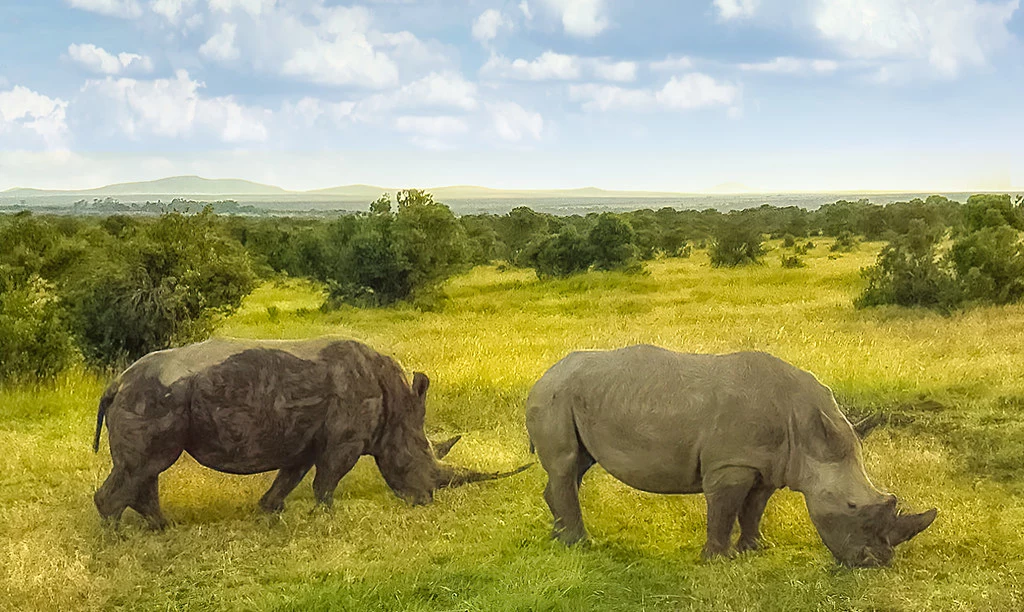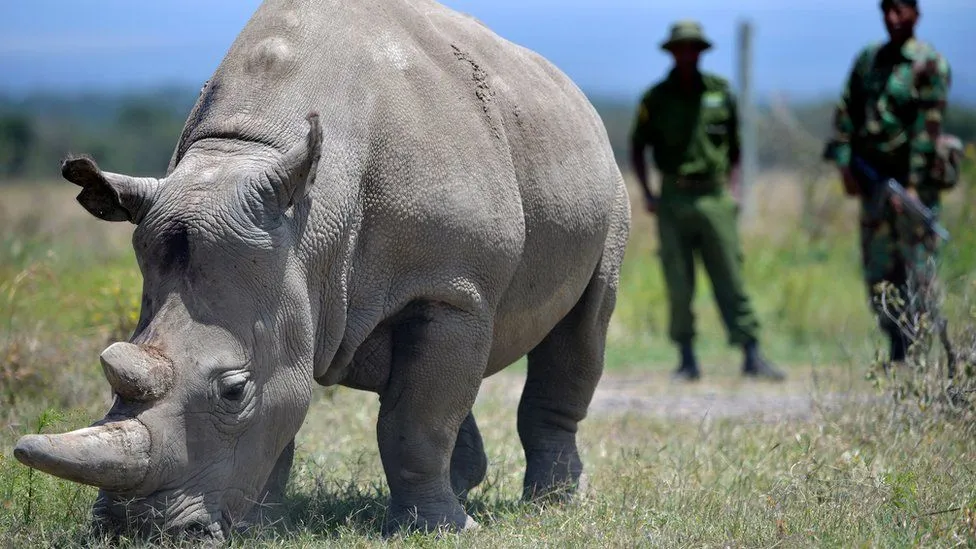Rhinoceroses, also called rhinos, are huge, herbivorous mammals easily characterized by the horned snouts they possess above the nose. They get their name “rhinoceros” from the Greek words “rhino” meaning ‘nose’ and “ceros” meaning ‘horn’. In Africa, they are common in countries like South Africa, Swaziland, Kenya, Zimbabwe, Côte d’Ivoire, and Namibia.
In the African wild today, the rhino population stands at around 27,000 rhinos, a huge drop from the 70,000 rhinos which were in Africa by 1970. Kruger National Park, a flagship national park in South Africa, is home to the largest number of rhinos in Africa, with over 3,529 white rhinos and 268 black ones.
This article discusses the rhino species found in Africa, their sizes and weight, the extinct breeds of the African rhino and those endangered as well as the conservation efforts being put in place to rescue the remaining rhino population, among other facts.
How Many Species Of Rhinos Are There?
The African rhino is categorized into two species: the white and the black rhino species.
The white rhinos are mainly found in South Africa. The southern part of Kruger national park is the ideal host of white rhinos. However, some have been reintroduced in the forests of Botswana, Swaziland, Namibia, and Zimbabwe. The southern white rhinos, a subspecies of the white rhino, have been reintroduced in Cote d’Ivoire, Kenya, and Zambia.
Most of the black rhinos, almost 98%, are distributed in only four countries: Namibia, Kenya, South Africa and Namibia. Out of these, 40% are housed in South African forests. Away from the genetic differences, the two major species of the African rhino can be effortlessly differentiated. The white rhino, of all species, is the largest, ranking second-largest mammal on land, next to the African elephant. Black rhinos are smaller and are of a lighter weight. The mature white rhino can weigh between 900 and 2000 kgs while the black one weighs between 800 and 1400 kgs.
Which Rhino Breeds Are Extinct?

Of all known black rhino subspecies, three of them are extinct. The southern black rhino, the north-eastern black rhino, and recently, the western black rhino breeds are currently extinct.
The southern black rhino was declared extinct in 1850, due to poaching and destruction of its habitat. The north-eastern black rhino became extinct a few years afterward, by the end of the same century. Recently, in 2014, the western black rhino got into the records as extinct after a search could not locate the remaining two individuals in Cameroon. Sudan, one of the three only male northern white rhinoceros and the only member of his subspecies alive on the planet, was a captive from Czech Republic. As from 2009, he lived in Ol pejeta Conservancy in Laikipia, Kenya, until his death in 2018, when he was euthanized after troublesome, age-related complications.[
The white rhino can be accurately known as the square-lipped rhino because of the shape of its lips, which are wide. The wide lips allow the rhino to graze with ease. On the contrary, the black rhino has a pointed upper lip, thus the name hook-lipped rhino. The pointed lip enables the black rhinoceros to pull leaves off the tree and bushes while browsing the different vegetation.
What Is The Conservation Status Of Rhinos?
According to the IUCN Red List of Threatened Species, the population of the black rhino has been increasing slowly due to conservation efforts that have countered poaching, which is the main threat to rhinos.
The African Black Rhino is still categorized as Critically Endangered. Currently, very few rhinos exist outside the game reserves and national parks in Africa. Different organizations, government ministries and conservationists are putting more effort to protect a number of the rhino’s natural habitats such as Tanzanian coastal habitats and the Mau-Mara-Serengeti habitats.
Such organizations include Save the Rhino International, which has significantly reduced poached rhino numbers, the International Rhino Foundation and the Tusk, all aimed at conserving rhinos in Africa.
Why Are Rhinos Endangered?
Definitely yes, the black rhinos in Africa are critically endangered due to the unabated demands of rhino horns by the main consumers of its products: Vietnam and China in particular. Powdered horn serves as traditional Asian medicine, thought to be a cure for cancer, fever and other ailments.
Poverty has led many folks into poaching the rhinos for the horn, which is sold abroad, threatening the existence of the rhino population. The disruption and destruction of the rhino habitats have also made their lives very hard to bear, exposing them to different complications and unworthy environments for existence and social behaviors for reproduction.
If rhinos get extinct, in any case, plant biodiversity and grazing lawns will not be sustainable. This would make the Savannahs in Africa less hospitable to the other herbivores. The dama gazelle, currently categorized as Critically Endangered and with a mere population of only 500, would suffer the most from the ecological imbalance.

Kenyan northern white rhino With Kenya Wildlife Service Guards
What Conservation Efforts Are In Place For Rhinos?
The black and white rhino species have significantly increased in population – the fruits of conservation efforts being successfully implemented in the past few years. For instance, in South Africa, the black rhino has been rescued from the verge of extinction.
- Protecting them from poachers: Countries and their governments, conservationists and organization are protecting the remaining rhinos from the poachers who kill rhinos for their horn, believed to have a medicinal essence. Statistics say that in South Africa, three rhinos are poached every day.
- Law enforcement efforts: The enactment of stern laws against poaching has been fruitful, helping in the fight against the endangering and extinction of the remaining rhino species. For example, the south-western black rhino, a subspecies of the black rhino, which was classified as Vulnerable, has grown over the past three generations and got to the category of Near Threatened.
- Effective rhino population management measures: This has been possible by transferring chosen rhinos from stable populations to new areas to make them productive and add to the species’ range. Such efforts have seen a significant population increase among the rhinoceroses.
